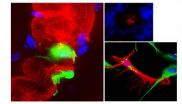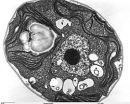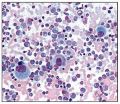(Press-News.org) In 2005, President George W. Bush and American corn farmers saw corn ethanol as a promising fossil fuel substitute that would reduce both American dependence on foreign oil and greenhouse gas emissions. Accordingly, the 2005 energy bill mandated that 4 billion gallons of renewable fuel be added to the gasoline supply in 2006. That rose to 4.7 billion gallons in 2007 and 7.5 billion in 2012.
Since then, life cycle assessments (LCAs) have shown that corn ethanol has modest if any effect on reducing CO2 emissions and may actually increase them, while posing a threat to natural habitats and food supplies, as food stocks are turned to fuel and marginal lands are put under the plough to keep up with demand. In 2010, fuel ethanol consumed 40 percent of U.S. corn production, and 2012 prices are at record highs. Since the U.S. also accounts for 40 percent of the world's corn, U.S. ethanol production has affected corn prices around the planet.
As electric vehicles (EVs) increasingly enter the market and charging stations are built to serve them, EVs are competing with alternative-fuel vehicles. Using electricity generated by coal-fired plants to power the cars defeats the purpose to some extent, but what if the energy comes from the ultimate clean and renewable source – the sun itself? How would that compete with ethanol in terms of land use, life-cycle emissions, and even cost?
The question, says UCSB Bren School of Environmental Science & Management Professor and LCA expert Roland Geyer, is which makes more sense, growing fuel crops to supply alternative-fuel vehicles with ethanol and other biofuels or using photovoltaics (PV) to directly power battery electric vehicles (BEV)?
"The energy source for biofuels is the sun, through photosynthesis," he says. "The energy source for solar power is also the sun. Which is better?"
To find out, Geyer joined former BrenSchool researcher David Stoms and James Kallaos, of the Norwegian University of Science and Technology, to model the relative efficiencies of the technologies at converting a given amount of sunlight to miles driven.
The results, which appear in a paper titled "Spatially Explicit Life Cycle Assessment of Sun-to-Wheels Transportation Pathways in the U.S." and published in the Dec. 26 issue of the journal Environmental Science & Technology, showed photovoltaics (PV) to be much more efficient than biomass at turning sunlight into energy to fuel a car.
"PV is orders of magnitude more efficient than biofuels pathways in terms of land use – 30, 50, even 200 times more efficient – depending on the specific crop and local conditions," says Geyer. "You get the same amount of energy using much less land, and PV doesn't require farm land."
The researchers examined three ways of using sunlight to power cars: a) the traditional method of converting corn or other plants to ethanol; b) converting energy crops into electricity for BEVs rather than producing ethanol; and C) using PVs to convert sunlight directly into electricity for BEVs.
Because land-use decisions are local, Geyer explains, he and his colleagues examined five prominent "sun-to-wheels" energy conversion pathways – ethanol from corn or switchgrass for internal combustion vehicles, electricity from corn or switchgrass for BEVs, and PV electricity for BEVs – for every county in the contiguous United States.
Focusing the LCA on three key impacts – direct land use, life cycle greenhouse gas (GHG) emissions, and fossil fuel requirements – the researchers identified PV electricity for battery electric vehicles as the superior sun-to-wheels conversion method.
"Even the most efficient biomass-based pathway…requires 29 times more land than the PV-based alternative in the same locations," the authors write. "PV BEV systems also have the lowest life-cycle GHG emissions throughout the U.S. and the lowest fossil fuel inputs, except in locations that have very high hypothetical switchgrass yields of 16 or more tons per hectare."
PV conversion also has lower GHG emissions throughout the life cycle than do cellulosic biofuels, even in the most optimistic scenario for the latter. "The bottleneck for biofuels is photosynthesis," Geyer says. "It's at best 1-percent efficient at converting sunlight to crop, while today's thin-film PV is at least 10-percent efficient at converting sunlight to electricity.
Finally, while cost was not a key component of the study, Geyer says, "The cost of solar power is dropping, and our quick calculations suggests that with the federal tax credit, electric vehicles are already competitive."
What does this mean for the future?
“What this research taught me is that biomass is simply not a good way of harvesting sunlight,” Geyer explains. “Not because of immature technologies but because of a fundamental physical constraint, the inefficiency of photosynthesis. This fundamental disadvantage will just get worse as PV-powered EVs are getting cheaper and more efficient in the years to come. A search for a silver bullet is under way in energy research, be it artificial photosynthesis or third-generation biofuels. But if there is a silver bullet, I think it is photovoltaics.”
### END
Photovoltaics beat biofuels at converting sun's energy to miles driven
New study shows solar power is not only better in terms of energy efficiency, land use, and greenhouse gas emissions -- but cost competitive, too
2013-01-17
ELSE PRESS RELEASES FROM THIS DATE:
New research throws doubt on earlier 'killer walrus' claims
2013-01-17
Palaeontologists who examined a new fossil found in southern California have thrown doubt on earlier claims that a "killer walrus" once existed.
Geology PhD student Robert Boessenecker from New Zealand's University of Otago and co-author Morgan Churchill from the University of Wyoming have today published their paper about the fossil in the online scientific journal PLOS ONE.
The paper reports that the new fossil-find, of the extinct walrus Pelagiarctos from southern California, prompts a different hypothesis to an earlier one that a "killer walrus" existed, preying ...
New study examines post-Roe v. Wade arrests of and forced interventions on pregnant women
2013-01-17
"Arrests of and Forced Interventions on Pregnant Women in the United States, 1973-2005: Implications for Women's Legal Status and Public Health," an article by Lynn M. Paltrow and Jeanne Flavin in the Journal of Health Politics, Policy and Law (volume 38, issue 2), offers a groundbreaking, in-depth look at criminal and civil cases in which a woman's pregnancy was a deciding factor leading to attempted and actual deprivations of her physical liberty.
As "personhood" measures are promoted and the fortieth anniversary of Roe v. Wade approaches, this article broadens the ...
Quail really know their camouflage
2013-01-17
When it comes to camouflage, ground-nesting Japanese quail are experts. That's based on new evidence published online on January 17 in Current Biology that mother quail "know" the patterning of their own eggs and choose laying spots to hide them best.
"Not only are the eggs camouflaged, but the birds choose to lay their eggs on a substrate that maximizes camouflage," said P. George Lovell of Abertay University and the University of St Andrews. "Furthermore, the maximization seems specific to individual birds."
Karen Spencer, also of University of St Andrews and a co-author, ...
New insights into how leprosy infection spreads could pave the way for early intervention
2013-01-17
Leprosy is a bacterial disease that spreads to muscles and other tissues in the body, causing neurodegeneration and muscle weakness. A new study, published by Cell Press January 17th in the journal Cell, reveals that the bacteria responsible for leprosy spread infection by hijacking specialized cells in the adult nervous system, reprogramming them into a stem cell-like state, and converting them to muscle-like cells. These findings could lead to the development of new therapeutic strategies for combating bacterial infections and degenerative diseases as well as new tools ...
Learning the alphabet of gene control
2013-01-17
Scientists at Karolinska Institutet in Sweden have made a large step towards the understanding of how human genes are regulated. In a new study, published in the journal Cell, they identified the DNA sequences that bind to over four hundred proteins that control expression of genes. This knowledge is required for understanding of how differences in genomes of individuals affect their risk to develop disease.
After the human genome was sequenced in 2000, it was hoped that the knowledge of the entire sequence of human DNA could rapidly be translated to medical benefits ...
Cancer mortality down 20 percent from 1991 peak
2013-01-17
Atlanta– Jan. 17, 2013–As of 2009, the overall death rate for cancer in the United States had declined 20 percent from its peak in 1991, translating to the avoidance of approximately 1.2 million deaths from cancer, 152,900 of these in 2009 alone. These figures come from the American Cancer Society's annual Cancer Statistics report, one of the most widely-cited medical publications in the world.
Each year, the American Cancer Society estimates the numbers of new cancer cases and deaths expected in the United States in the current year and compiles the most recent data ...
How cells know when it's time to eat themselves
2013-01-17
Researchers at the University of California, San Diego School of Medicine have identified a molecular mechanism regulating autophagy, a fundamental stress response used by cells to help ensure their survival in adverse conditions.
The findings are published online in the January 17 issue of Cell.
Senior author Kun-Liang Guan, PhD, a professor of pharmacology at UC San Diego Moores Cancer Center, and colleagues report that an enzyme called AMPK, typically involved in sensing and modulating energy use in cells, also regulates autophagic enzymes.
Autophagy, which derives ...
Drug targets hard-to-reach leukemia stem cells responsible for relapses
2013-01-17
Researchers at the University of California, San Diego School of Medicine have discovered that hard-to-reach, drug-resistant leukemia stem cells (LSCs) that overexpress multiple pro-survival protein forms are sensitive – and thus vulnerable – to a novel cancer stem cell-targeting drug currently under development.
The findings, published in the January 17 online issue of Cell Stem Cell, open the possibility that diseases like chronic myeloid leukemia (CML) and some solid tumor cancers might – in combination with other therapies – be more effectively treated with this ...
Mount Sinai researchers discover how the flu virus tells time
2013-01-17
Scientists have discovered that that the flu virus can essentially tell time, thereby giving scientists the ability to reset the virus' clock and combat it in more effective ways. According to researchers at the Icahn School of Medicine at Mount Sinai, the flu knows how much time it has to multiply, infect other cells, and spread to another human being. If it leaves a cell too soon, the virus is too weak. If it leaves too late, the immune system has time to kill the virus.
The finding provides a novel design platform for the flu vaccine and could lead to new antiviral ...
Deodorants: Do we really need them?
2013-01-17
New research shows that more than 75 per cent of people with a particular version of a gene don't produce under-arm odour but use deodorant anyway.
The study was based on a sample of 6,495 women who are part of the wider Children of the 90s study at the University of Bristol. The researchers found that about two per cent (117 out of 6,495) of mothers carry a rare version of a particular gene (ABCC11), which means they don't produce any under-arm odour.
While about 5 per cent of people who produce an odour do not use deodorant, more than a fifth (26 out of 117) of ...
LAST 30 PRESS RELEASES:
General intelligence framework to predict virus adaptation based on a genome language model
Antibiotic resistance is ancient, ecological, and deeply connected to human activity, new review shows
Vapes, pouches, heated tobacco, shisha, cigarettes: nicotine in all forms is toxic to the heart and blood vessels
From powder to planet: University of Modena engineers forge a low-carbon future for advanced metal manufacturing
Super strain-resistant superconductors
Pre-school health programme does not improve children’s diet or physical activity, prompting call for policy changes, study finds
Autumn clock change linked to reduction in certain health conditions
AI images of doctors can exaggerate and reinforce existing stereotypes
Where medicine meets melody – how lullabies help babies and parents in intensive care
We may never be able to tell if AI becomes conscious, argues philosopher
AI video translation shows promise but humans still hold the edge
Deep ocean earthquakes drive Southern Ocean’s massive phytoplankton blooms, study finds
Without campus leftovers to pick through, the beaks of this bird changed shape during the pandemic
High-dose antibiotic does not reduce mortality in tuberculous meningitis
How many insects fly in the sky above the USA?
Could cheese protect your brain health?
Who faces more difficulty recovering from stroke?
Colliding galaxies create the brightest, fastest growing black holes at their center
New BrainHealth research reveals tradeoffs on sleep with cannabis use for chronic pain
Aging-US now on ResearchGate, enhancing visibility for authors and readers
'Molecular glue' stabilizes protein that inhibits development of non-small cell lung cancer
Mount Sinai Health System is recognized in 2025 Chime Digital Health Most Wired survey
From prey to predator: How carnivores spread beneficial fungi
Menopause symptoms may be frequent and have negative effects, according to female endurance athletes
US Congressmembers’ responses on X to mass shooting events differ along party lines
KAIST-UEL team develops “origami” airless wheel to explore lunar caves
Individual genetic differences render some therapies ineffective
Engineering dendritic cells boosts cancer immunotherapy
Sophisticated neuroimaging reveals PTSD in WTC responders is linked to measurable physical changes in brain structure
Health policy experts identify promising strategies for providing health care to homeless people
[Press-News.org] Photovoltaics beat biofuels at converting sun's energy to miles drivenNew study shows solar power is not only better in terms of energy efficiency, land use, and greenhouse gas emissions -- but cost competitive, too




